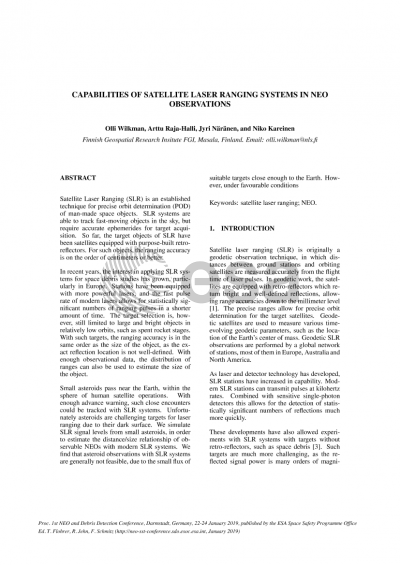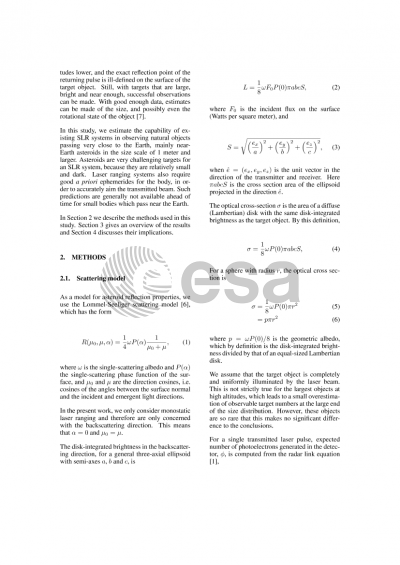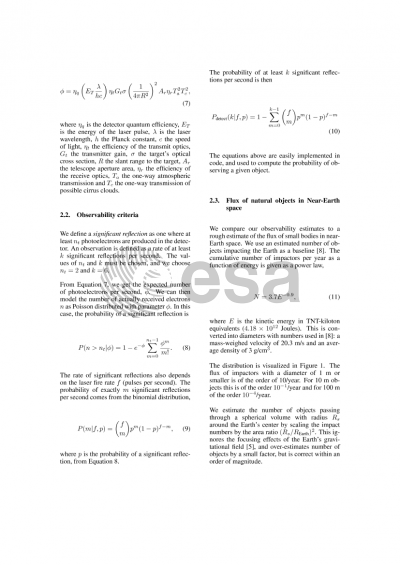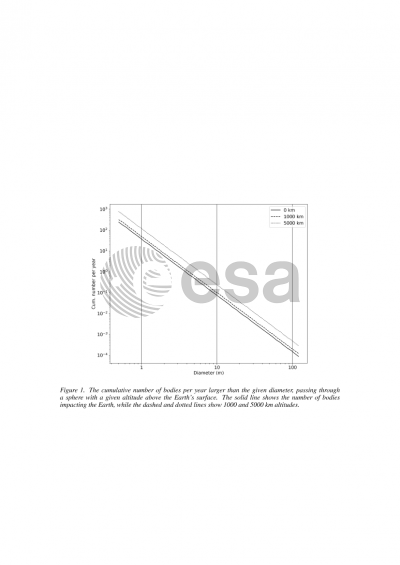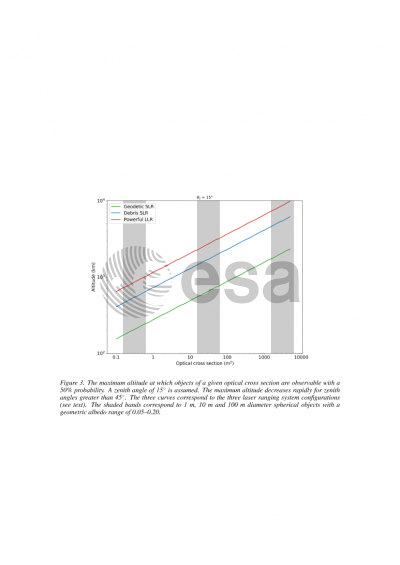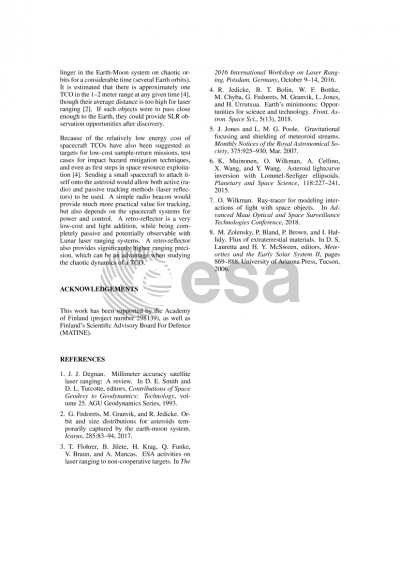Document details
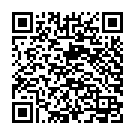
Abstract
Satellite Laser Ranging (SLR) is a well-established technique for precise orbit determination (POD) of man-made space objects. There exists a global network of about fifty SLR stations, mostly in the northern hemisphere. Laser pulses are fired from a ground station to the object and the time-of-flight is measured to retrieve an accurate range. SLR systems are able to track fast-moving objects in the sky, but require accurate ephemerides for target acquisition. So far, the target objects of SLR have been satellites equipped with purpose-built retro-reflectors. For such objects, the ranging accuracy is on the order of centimeters or better.
In recent years, the interest in applying SLR systems for space debris studies has grown, particularly in Europe. Stations have been equipped with more powerful lasers, and the pulse rate of modern lasers allows for statistically significant numbers of ranging pulses in a shorter amount of time. The target selection is, however, still limited to large and bright objects in relatively low orbits, such as spent rocket stages. With such targets, the ranging accuracy is in the same order as the size of the object, as the exact reflection location is not well-defined. With enough observational data, the distribution of ranges can also be used to estimate the size of the object.
Small asteroids pass near the Earth, within the sphere of human satellite operations. With enough advance warning, such a close encounter could be tracked with SLR systems. Unfortunately asteroids are challenging targets for laser ranging due to their dark surface. We apply a ray-tracing software designed for simulating the reflection of laser ranging pulses from space debris objects. We simulate SLR signal levels from small asteroids, in order to estimate the distance/size relationship of observable NEOs with modern SLR systems. We also simulate the observed range distributions from ellipsoidal asteroids of different elongations, and show the effect of the asteroid's rotation on a hypothetical observed range distribution. In theory, this can be used to derive information about the asteroid's rotational state.
Preview
